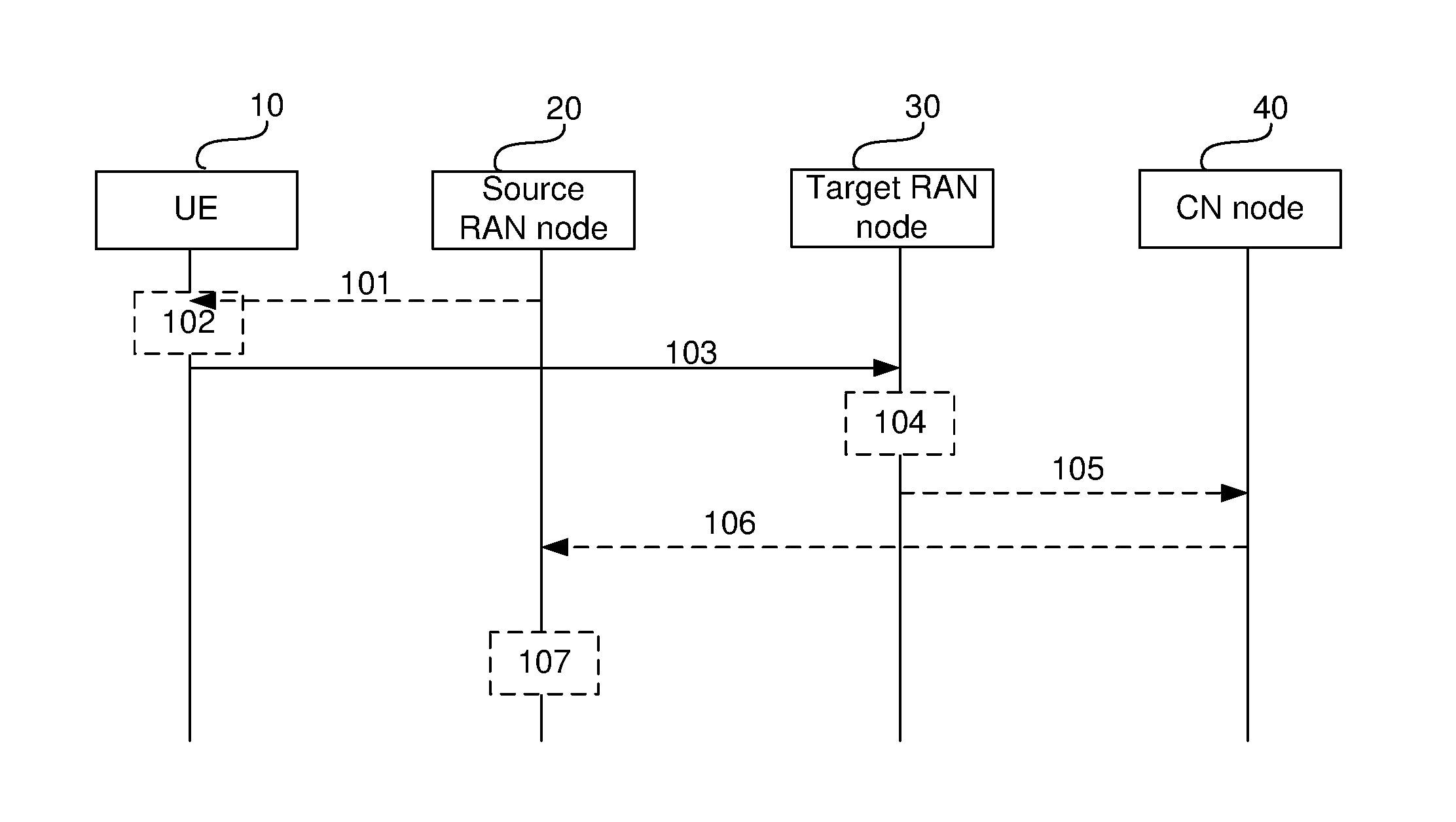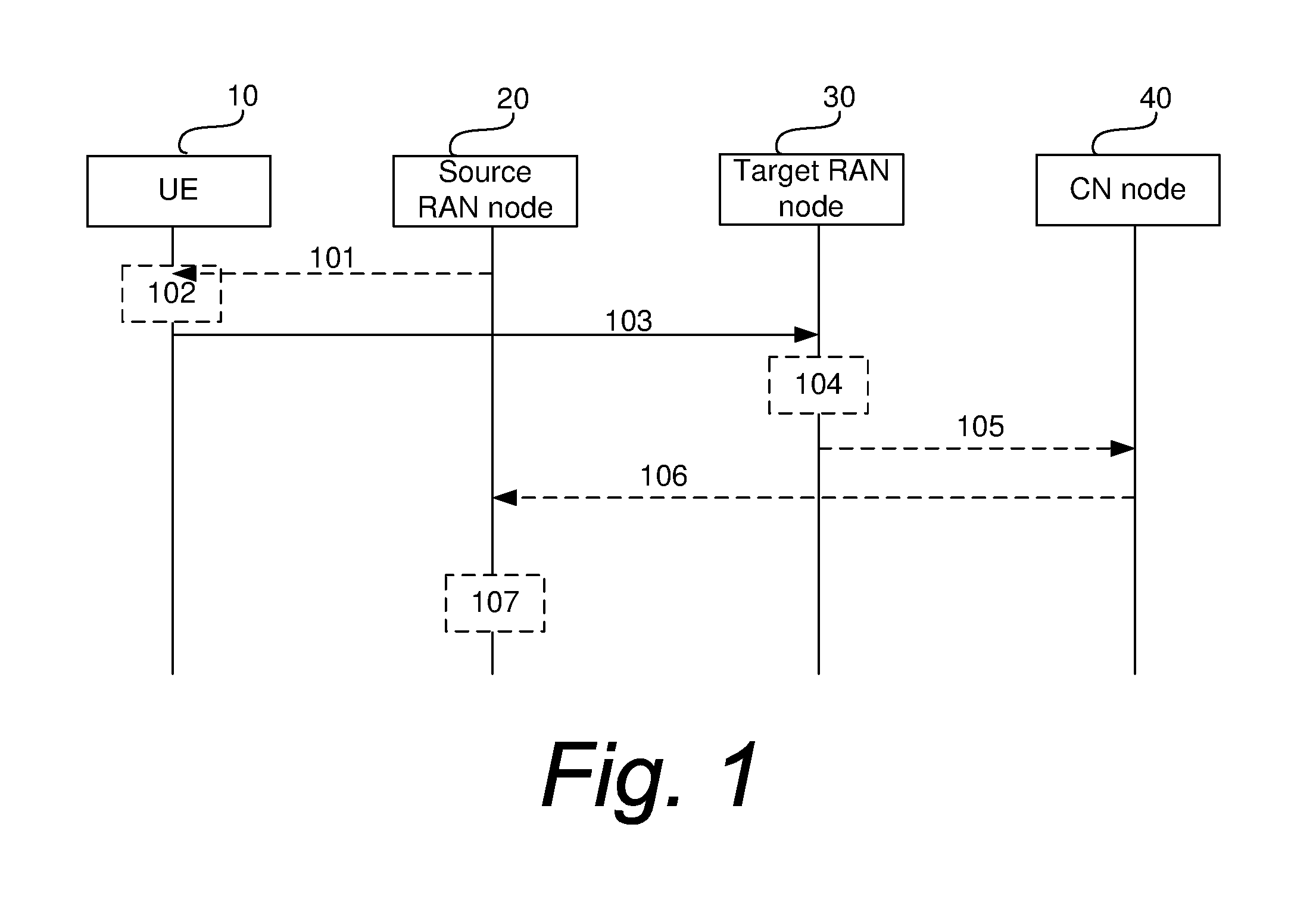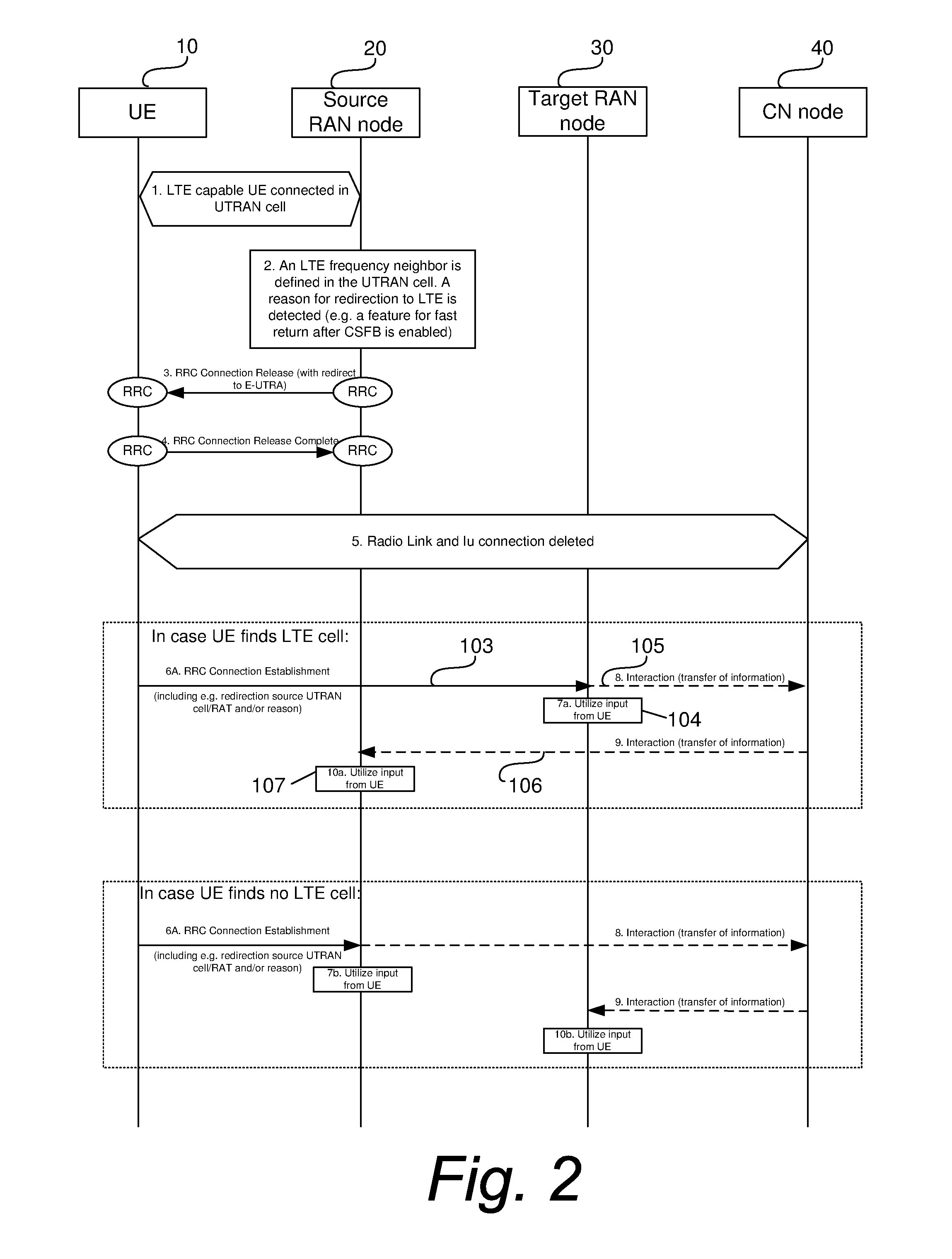Movement of user equipments between cells
a technology for user equipment and cell, applied in the field of communication networks, can solve the problems of network optimization, observability of inability to observe the success rate of the move, so as to improve the cell mobility decision, or optimize the cell mobility decision
- Summary
- Abstract
- Description
- Claims
- Application Information
AI Technical Summary
Benefits of technology
Problems solved by technology
Method used
Image
Examples
example embodiment m4
[0088]The method of any of the examples M1-M3, wherein the at least one cell mobility parameter comprises a parameter indicating a reason for cell movement from a source cell to another cell.
example embodiment m5
[0089]The method of any of the examples M1-M4, wherein the at least one cell mobility parameter comprises: a parameter indicating one or several frequencies that the UE has been requested, by a source radio access network node (source RAN node), to search.
Example Embodiment M6
[0090]The method of any of the examples M1-M5, wherein the at least one cell mobility parameter comprises: a parameter indicating which cell the UE has been requested, by a source radio access network node (source RAN node), to move to.
example embodiment m7
[0091]The method of any of the examples M1-M6, comprising, for example, prior to transmitting the signal comprising the at least one cell mobility parameter associated with the UE, retrieving the at least one cell mobility parameter.
Example Embodiment M8
[0092]The method of example M7, wherein the retrieving of the at least one cell mobility parameter comprises receiving the at least one cell mobility parameter from a source RAN node.
PUM
 Login to View More
Login to View More Abstract
Description
Claims
Application Information
 Login to View More
Login to View More - R&D
- Intellectual Property
- Life Sciences
- Materials
- Tech Scout
- Unparalleled Data Quality
- Higher Quality Content
- 60% Fewer Hallucinations
Browse by: Latest US Patents, China's latest patents, Technical Efficacy Thesaurus, Application Domain, Technology Topic, Popular Technical Reports.
© 2025 PatSnap. All rights reserved.Legal|Privacy policy|Modern Slavery Act Transparency Statement|Sitemap|About US| Contact US: help@patsnap.com



